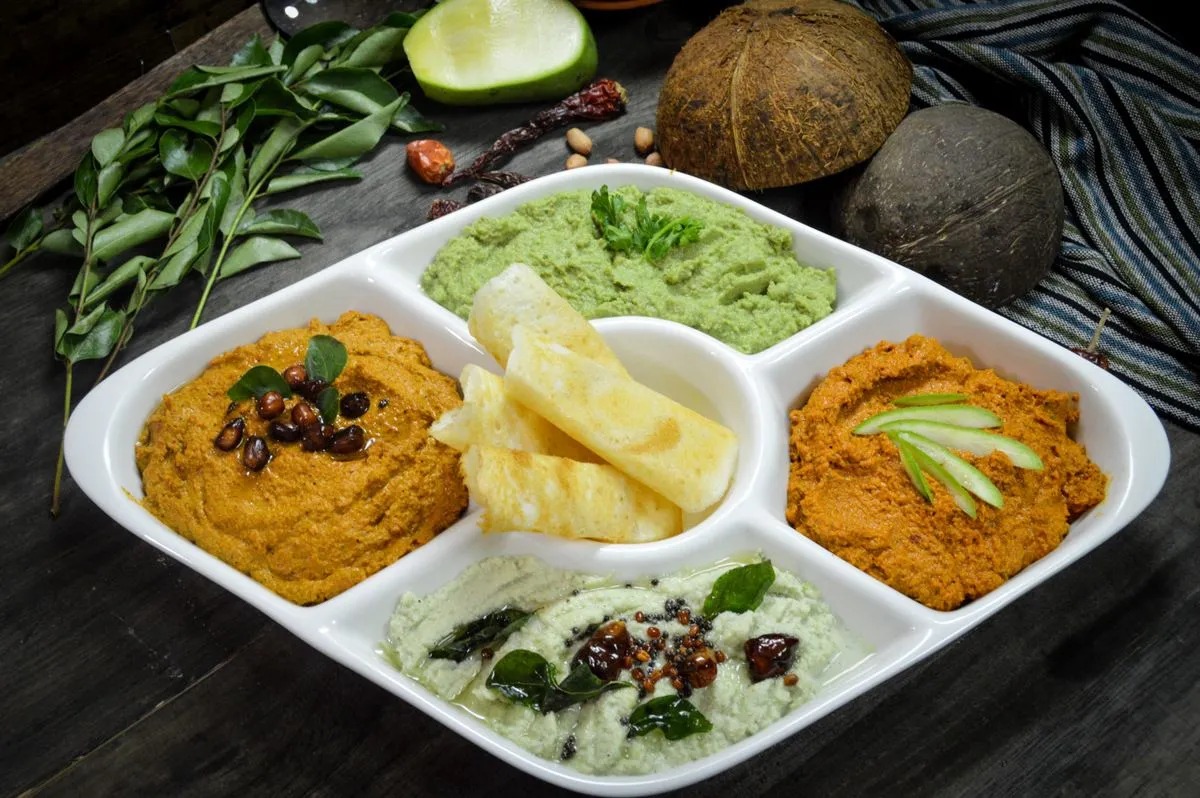 Image Source : Shanaz Rafiq
Image Source : Shanaz Rafiq
India’s kitchens are buzzing with a revival of traditional chutneys that go well beyond the familiar mango preserve. From tribal delicacies to Mughal-era staples, these seven chutneys showcase the country’s rich culinary diversity, each offering a unique blend of history, local ingredients, and bold flavour. As chutneys reclaim their place on modern plates—from street food stalls to charcuterie boards—they are proving to be more than just condiments. They are cultural artefacts, each with a story to tell.
1. Red Ant Chutney (Chaprah)
- Originating from Chhattisgarh, Odisha, and Jharkhand, this tribal delicacy is made from red ants and their eggs
- The ants are sun-dried and ground with tomatoes, garlic, ginger, coriander, chilli, and salt, creating a fiery paste rich in formic acid
- Traditionally sold in sal leaf packets, this chutney is both a protein source and a symbol of indigenous culinary resilience
2. Mint-Coriander Chutney
- A staple across North India, this green chutney combines fresh mint, coriander, green chillies, and lemon juice
- Often served with parathas, samosas, and chaat, it traces its roots to Mughal gardens where herbs grew in abundance
- Variations include grated raw mango for added tang, making it a versatile accompaniment
3. Tamarind Chutney
- Known for its sweet and tart profile, tamarind chutney is a legacy of the Indus Valley civilisation
- The pulp is blended with jaggery, cumin, ginger, and sometimes dates, creating a rich sauce for snacks like bhel puri and pakoras
- Its balance of acidity and sweetness makes it a favourite across regions
4. Tomato Chutney
- Bengal’s version is sweet and served at the end of meals with roasted papad, while Hyderabad’s is spicy and savoury
- Tomatoes, introduced by the Portuguese in the 16th century, became a staple in Indian kitchens by the 18th century
- The chutney is often tempered with mustard seeds, curry leaves, and dried red chillies
5. Shengdana (Peanut) Chutney
- Popular in Maharashtra and Gujarat, this chutney uses roasted peanuts ground with garlic, green chillies, and salt
- Peanuts, brought to India by the Portuguese, thrive in the western climate and have become integral to local diets
- Variants include coconut or tamarind for added depth, often served with bhakri or poha
6. Plastic Chutney
- A Bengali favourite made from raw papaya, sugar, lemon juice, and panch phoron (five-spice blend)
- The translucent papaya slices resemble plastic strips, hence the name
- Served at weddings and festive meals, it offers a sweet counterpoint to spicy dishes
7. Sesame Chutney
- Found in Andhra Pradesh and Telangana, this earthy chutney is made from roasted sesame seeds, tamarind, garlic, and jaggery
- It pairs well with steamed rice and ghee, offering a nutty, slightly sweet flavour
- Sesame’s high calcium content adds nutritional value to this traditional side
Conclusion
These seven chutneys represent more than regional tastes—they are edible narratives of migration, colonisation, trade, and tradition. Whether it’s the tribal heat of red ants or the Mughal elegance of mint and coriander, each chutney invites us to explore India’s culinary map with curiosity and respect. As chutneys find new life in modern pairings—from cheese boards to fusion platters—they continue to evolve while staying rooted in heritage.
Sources: Indian Express, Times of India, NDTV Food.
Advertisement
Advertisement




